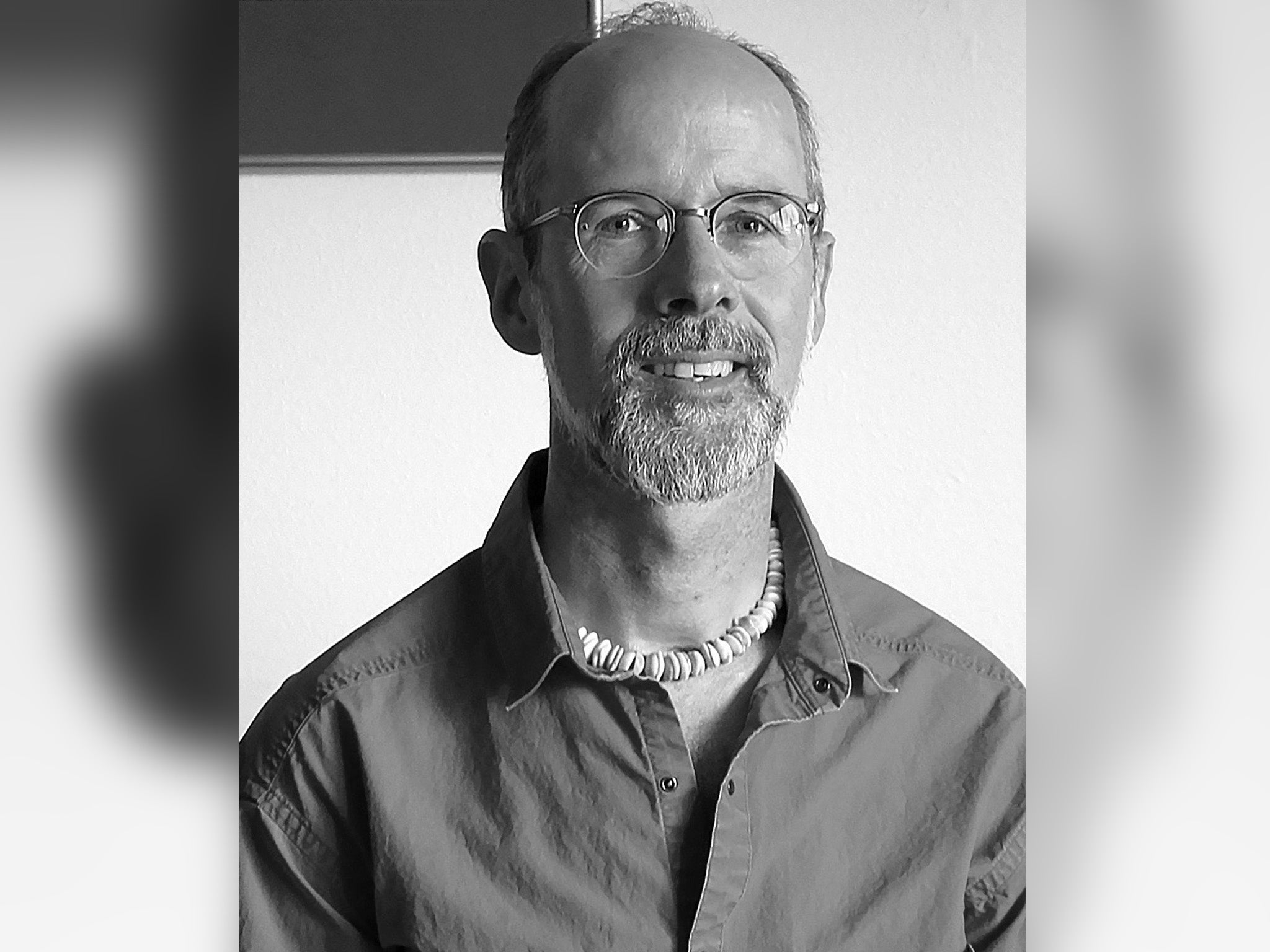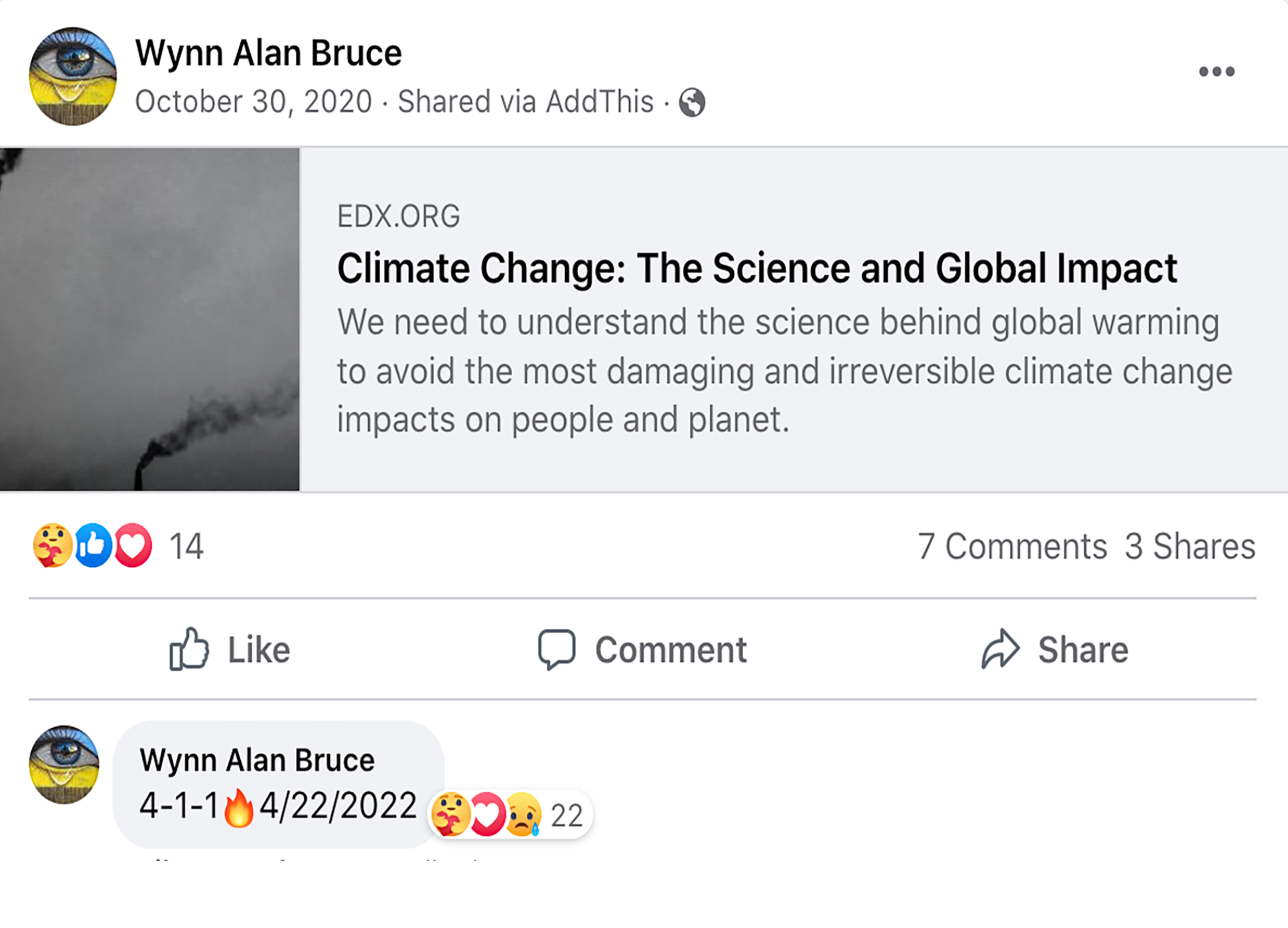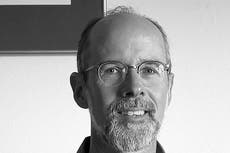The truth behind the man who set himself on fire at the Supreme Court
Some close to the 50-year-old are convinced his death was a protest to coincide with Earth Day, while others said they struggled to understand why he chose to do what he did. Sheila Flynn reports

Last Wednesday, Wynn Alan Bruce asked two neighbours to drive him to the bus station in Boulder, Colorado so that he could travel to Denver.
One was unable to fit the trip into her schedule; the other, his next-door neighbour of 20 years, agreed. Chris King knew that Mr Bruce, 50, had suffered a traumatic brain injury (TBI) in a car accident as a teenager so was unable to drive. Instead, Mr Bruce got around the local area on one of his three bicycles – but not a sufficient mode of transport for the nearly 30 mile journey to Denver.
Mr King also knew that his neighbour, who lived alone with his cat in a townhome secured through a city affordable housing programme, had trouble focusing and organising.
Mr Bruce would start projects on his porch and then absent-mindedly abandon them, his neighbour told The Independent. Mr King cleaned up one such pile of collected items this week.
“I dropped him at the bus station, and he had a backpack,” says Mr King. Mr Bruce, who also had a small bag, told his neighbour that he was travelling to Denver to “meet with my meditation group”.
Mr King said: “A couple of days later, the cat was still in the window, and he wasn’t around.
“And then, I found out.”
Mr Bruce died after setting himself on fire on Friday, 22nd April – Earth Day – in front of the US Supreme Court in Washington DC. He was airlifted to hospital by a medical helicopter, and nearby roads were temporarily closed. Mr Bruce died 24 hours later, according to the Metropolitan Police Department (MPD).
His self-immolation was described as “not suicide” the morning after his death, by a woman who described herself as a Zen Buddhist priest and a friend of Mr Bruce.
“This is a deeply fearless act of compassion to bring attention to climate crisis,” Dr K. Kritee, also known as Kritee Kritee or Kritee Kanko, tweeted on Sunday.
The DC police department has given no indication that Mr Bruce left a note, and witnesses said that he was silent before he set himself alight. Police would not comment to The Independent, citing an ongoing investigation.
Police in Boulder, where Mr Bruce lived for more than 20 years, are not involved in any investigations into his death, a spokeswoman told The Independent.
The details of his travels from Colorado to Washington DC are unknown.
While self-immolations have been used in protests before, such as among Buddhists and anti-war protesters during the Vietnam War, this is believed to be only the second time that it has been linked to climate change.
In 2018, climate activist David Buckel, 60, died by self-immolation in Prospect Park in Brooklyn in protest at the use of fossil fuels. Shortly before his death, Mr Buckel emailed a suicide note to several media outlets explaining his actions.
“Most humans on the planet now breathe air made unhealthy by fossil fuels, and many die early deaths as a result — my early death by fossil fuel reflects what we are doing to ourselves,” he wrote. Mr Buckel had been a prominent civil rights lawyer and LGBTQ activist and ran the marriage-equality project at Lambda Legal.
The only public suggestion from Mr Bruce that climate change motivated his actions were a few cryptic Facebook posts. In October 2020, he posted a link about climate change, science and global impact, and last year he commented on that post with a fire emoji and the date 4/22/2022.
Other posts – such as a quote from astronomer Carl Sagan or photos of Walden Pond – suggested a passion for environmental issues and clean air.
Mr Bruce’s father also appeared to suggest that climate change had motivated his son.
“I agree with the belief that this was a fearless act of compassion about his concern for the environment,” Douglas Bruce, 78, told The Washington Post.
“Everybody gets to decide for themselves about how their end of life is going to take place. I honor that. I honor that. I respect him for it.”

Multiple calls from The Independent to Douglas Bruce were not answered and a message was not returned.
However fellow residents of his quiet complex in Boulder, who’d known him for two decades, expressed extreme shock at his actions.
Several said that they had never heard him mention climate change.
Mr King found out about his neighbour’s death that weekend. The tragic news was shared with him by two people, whom he described as “caretakers”, after they arrived at Mr Bruce’s home.
The visitors told him that Mr Bruce had taken his own life. Another neighbour later discovered online that Mr Bruce had set himself on fire.
“Where did all that come from?” one neighbour had asked, Mr King recalled to The Independent.
“It could be something he was just obsessing about internally,” he added.
Most of Mr Bruce’s Facebook activity focused on Buddhism, meditation, nature and his own photography. He ran a small business called Bright and True Photos taking portraits. At times, he also worked retail jobs.
Mr Bruce loved cycling, hiking and being out in nature, say friends, who universally described him as “sweet”, “gentle”, and “kind.”
At the nearby store Natural Grocers, where Mr Bruce shopped regularly previously worked, employees were “quietly sad”, said a manager who asked not to be named.
“He was in here last week, smiling and happy,” she told The Independent.
She said that his former colleagues were in shock not just at his death but at the “level of planning”.
Pauli Driver-Smith, who tutored Mr Bruce for two years in photography and other subjects, at Front Range Community College described him as “a very kind, caring, compassionate person”.
“He liked talking to people,” she said.
The tutor was paired with Mr Bruce because their interests and talents aligned and, she told The Independent, because she also had a TBI.
Mr Bruce suffered a brain injury in a car crash not long after he graduated from high school in Florida.
According to a St Petersburg Times article, he and a friend were heading to pick up their dates in October 1989, the Washington Post reported, when their Oldsmobile crashed. His friend was killed and Mr Bruce – just days before he was set to join the Air Force – was flown by helicopter to Tampa General Hospital.
He survived with lifelong injuries, derailing his military ambitions and countless other plans that the young and talented athlete had been planning.
It was a “significant accident, and it took him a long time to recover,” his father told The Post.
Ms Driver-Smith told The Independent that she “could relate to [Wynn Bruce’s] struggles”. She said that he could have trouble focusing, calming down, or accurately gauging decisions.
Every TBI differs in effects and severity, according to The Mayo Clinic, with wide-ranging ramifications including everything from inability to organise thoughts and ideas; trouble following and participating in conversations; irritability; lack of awareness of abilities; or issues with multi-tasking, problem-solving or decision-making.
Mr Bruce’s eye for photography was exceptional, Ms Driver-Smith says, and his pictures exuded great “joy,” particularly those focusing on nature.
“I think he felt at peace in nature,” she told The Independent. “Nature has a way of wiping out a lot of the business and everything that’s around you. You get into nature and the quiet and it kind of helps centre you – and that’s one of the things he told me about Buddhism, is that it was helping to center him and helping him to be more grounded.”
Mr Bruce attended retreats at the Rocky Mountain Ecodharma Retreat Center, about 40 minutes northwest of his house in a pristine mountain landscape, according to neighbours and the Center itself.
The Ecodharma Retreat is not associated with the main Boulder Shambhala Center, in the heart of the city. Boulder Shambhala representatives said that they had no knowledge of Mr Bruce.
Boulder has a large population of Buddhists, with different communities varying in size and beliefs.
Ecodharma’s co-founder, Dr Kritee Kritee, was one of the first people who knew Mr Bruce to make a statement following his death.
In the tweet on Sunday, she wrote: “This guy was my friend. He meditated with our sangha. This act is not suicide. This is a deeply fearless act of compassion to bring attention to climate crisis. We are piecing together info but he had been planning it for atleast one year. #wynnbruce I am so moved.”
A number of people expressed distress on social media at the apparent admiration for Mr Bruce’s violent death.
A day later, Ecodharma released a separate statement which said that the organisation “have never talked about self-immolation, and we do not think self-immolation is a climate action”.
“As we grieve the death of our friend Wynn Bruce and prepare a memorial page to honor him, we want to emphasize that none of the Buddhist teachers in the Boulder area knew about his plans to self-immolate on this Earth Day. If we had known about his plans, we would have stopped him in any way possible. That would be our spiritual, moral and legal responsibility. Just like everyone else, we have been trying to figure out what happened.”
The statement continued: “Nevertheless, given the dire state of the planet and worsening climate crisis, we understand why someone might do that… We hope we can hear Wynn’s message without condoning his method.”
The Independent has tried to reach Dr Kritee and Ecodharma for comment. Dr Kritee referred back to Ecodharma’s written statement.
Friends told The Independent that they struggled to understand how Mr Bruce had planned the trip, and what had convinced him to take his life so publicly and violently.
Beverly Lyne, a nurse who lives across the shared green space from Mr Bruce’s home, told The Independent that he also asked her for a ride last Wednesday. She said her conversations with Mr Bruce had always been casual and light.
“It seems as though he was able to plan and to get the funds to buy a ticket, but I don’t know, I can’t imagine that he put that together,” said Ms Lyne.
“We knew he had issues about just making day-to-day decisions,” she said.
She gestured to the grassy area between their homes.
“Here he’d put his hammock up and then sleep all day. It’s like, Wynn, this is not a campground,” she laughed softly.
Mr King said one neighbour described Mr Bruce as “suggestible”. His former tutor, Ms Driver-Smith, used the same word.
“He was, at times, easily led,” she told The Independent. “He was suggestible, I should say. You could suggest things to him and it was, ‘Oh, that makes sense,’ but I also think that the problem – and this is just a guess on my part, because ... I can be suggestible, and then I sit back and say, ‘Oh, wait a minute, that doesn’t make any sense – but at the moment it did,” she said, adding that it can be hard to “think fast.”
She added: “Getting to Washington DC, I could see him doing it on his own. Once he got to DC, how he managed to find the Supreme Court ... I don’t know, maybe he had help, maybe he didn’t.”
Ms Driver-Smith said that she wanted him to be remembered for his kindness and passion for people.
“He had a lot of potential, and he wanted to make the world a better place.
“I wish… that his passion for environmentalism and his passion for photography, that he had found a way to marry the two into something more positive than setting himself on fire.”
If you are experiencing feelings of distress and isolation, or are struggling to cope, The Samaritans offers support; you can speak to someone for free over the phone, in confidence, on 116 123 (UK and ROI), email jo@samaritans.org, or visit the Samaritans website to find details of your nearest branch.
If you are based in the USA, and you or someone you know needs mental health assistance right now, call National Suicide Prevention Helpline on 1-800-273-TALK (8255). The Helpline is a free, confidential crisis hotline that is available to everyone 24 hours a day, seven days a week.
If you are in another country, you can go to www.befrienders.org to find a helpline near you.



Bookmark popover
Removed from bookmarks